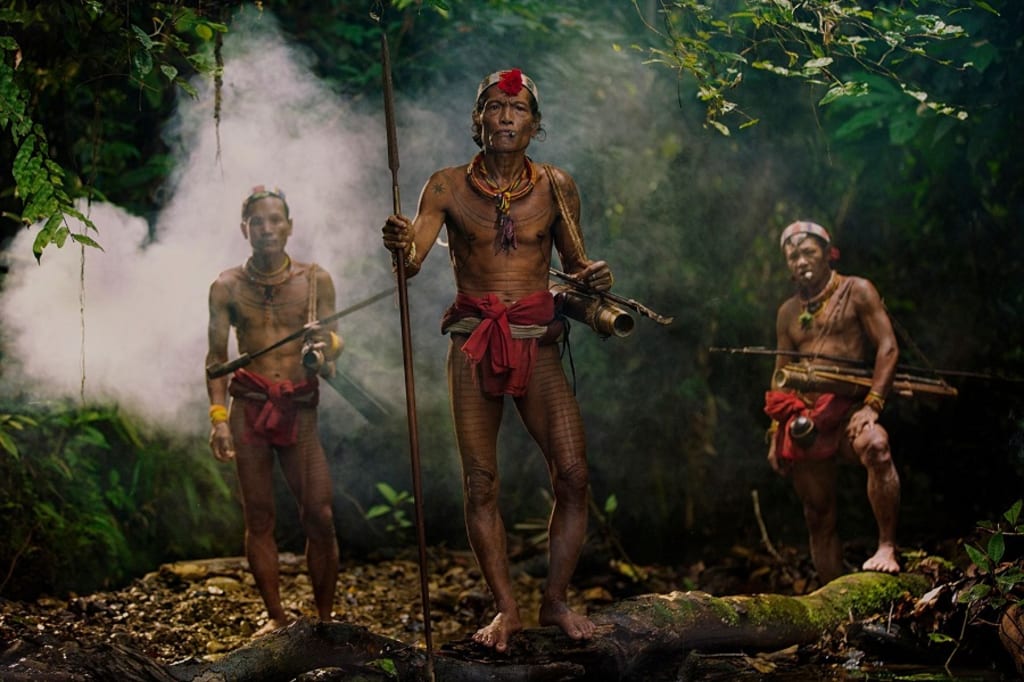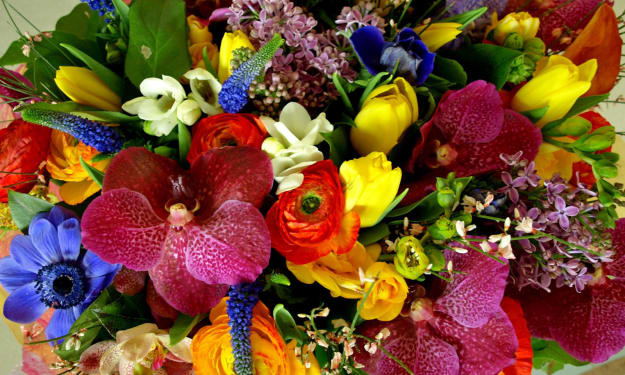MENTAWAI: THE FLOWER PEOPLE
"Journey into the Heart of the Mentawai Tribe: Exploring the Last Hunter-Gatherers of Siberut Island"

Introduction
Siberut Island, nestled within Indonesia's Mentawai Archipelago, is a place of captivating mystery and cultural richness. It is home to the Mentawai tribe, a group often referred to as the "Sikerei," known as the last semi-nomadic hunter-gatherers in the region. Their way of life, deeply intertwined with the jungle, the spirits of nature, and animistic beliefs, has withstood centuries of isolation and change.
Island Isolation and Rich Cultural Heritage
Siberut Island, where the Mentawai tribe resides, has remained largely isolated throughout its history. The journey to this remote island was treacherous due to strong winds, currents, and treacherous coral reefs. It wasn't until the 19th century that modern influences began to creep into this insular world. Today, we embark on a mission to document this unique culture before it evolves further.
One remarkable aspect of the Mentawai tribe is their lack of formal documents or a census. They do not know their exact ages or how long they have inhabited the island. Their history is passed down through oral traditions, a testament to the depth of their cultural heritage.
The People of the Flowers
The Mentawai tribe, often referred to as "the people of the flowers," is recognized for their distinctive body ornaments. These adornments, along with their traditional clothing, are crafted from the bark of a tree known as "baiko." Once processed, this bark transforms into the "kaabi," traditional clothing for men.
Their villages, known as "Uma," are architectural marvels of wood and leaf roofs. They serve as communal spaces for both daily life and important ceremonies. Remarkably, these Uma are adorned with a macabre display of skulls, symbolizing the tribe's connection with the animal world.
Hunting, Gathering, and Sustenance
The Mentawai tribe's survival hinges on their knowledge of the jungle and its offerings. Believed to have split from Sumatra approximately 500,000 years ago, this isolated archipelago boasts a rich array of endemic flora and fauna. The Sikerei, or shamans, play a vital role in teaching and preserving these traditions. They are the healers, mentors, and keepers of indigenous knowledge.
Hunting is a pivotal aspect of their existence. Special rituals precede hunting expeditions, particularly for animals like monkeys, whose skulls are displayed prominently in their Uma. The poison used on their arrows is derived from the jungle's resources, a potent tool for securing food.
Sagu: The Lifeline of the Mentawai Tribe
The sagu palm tree is a lifeline for the Mentawai people. Harvesting the sagu palm provides sustenance for months, making it a vital resource for the tribe. Notably, the grubs found in the rotting trunk of the sagu palm, known as "chontacuros," are a source of protein. The tribe also maintains semi-wild pigs that play a significant role in their culture, serving as a symbol of wealth and currency in marriage negotiations.
Spiritual Beliefs and Animistic Religion
The heart of the Mentawai culture lies in their spiritual beliefs and animistic religion known as "Arat Sabulungan." They worship the spirits of nature, including the jungle, mountains, rivers, and the sea. Every element of their environment, living or not, has a spirit or soul. The Sikerei, the tribe's shamans, are the gatekeepers of this spiritual realm. They are responsible for maintaining harmony between the people and their surroundings.
The Art of Tattooing and Traditional Attire
Traditional attire, known as "kaabit" for men, plays a significant role in the Mentawai culture. The Sikerei, distinguishable by their floral headpieces, necklaces, and tattoos, are responsible for creating these garments. Tattooing, historically performed by male tattoo specialists known as "sipatit," is a symbol of social status and protection. However, this ancient art form is fading, with few practitioners left.
Challenges of Modernization and Education
The Mentawai people are facing challenges brought about by modernization and government influence. Construction of towns along the coast threatens their traditional way of life. Few children attend school due to the cultural gap and financial burden it places on families. The introduction of non-Mentawai teachers further exacerbates the loss of cultural identity.
Conclusion
Our journey into Siberut Island and the lives of the Mentawai tribe has revealed a captivating world rich in tradition and spirituality. The Sikerei, the guardians of their culture, struggle to preserve their way of life amidst the encroachment of modernity. This exploration serves as a testament to the resilience of a people deeply connected to their environment and traditions. As the world continues to change, we hope the culture and animistic beliefs of the Mentawai tribe endure, safeguarding their unique heritage for generations to come.
About the Creator
Enjoyed the story? Support the Creator.
Subscribe for free to receive all their stories in your feed. You could also pledge your support or give them a one-off tip, letting them know you appreciate their work.






Comments
There are no comments for this story
Be the first to respond and start the conversation.